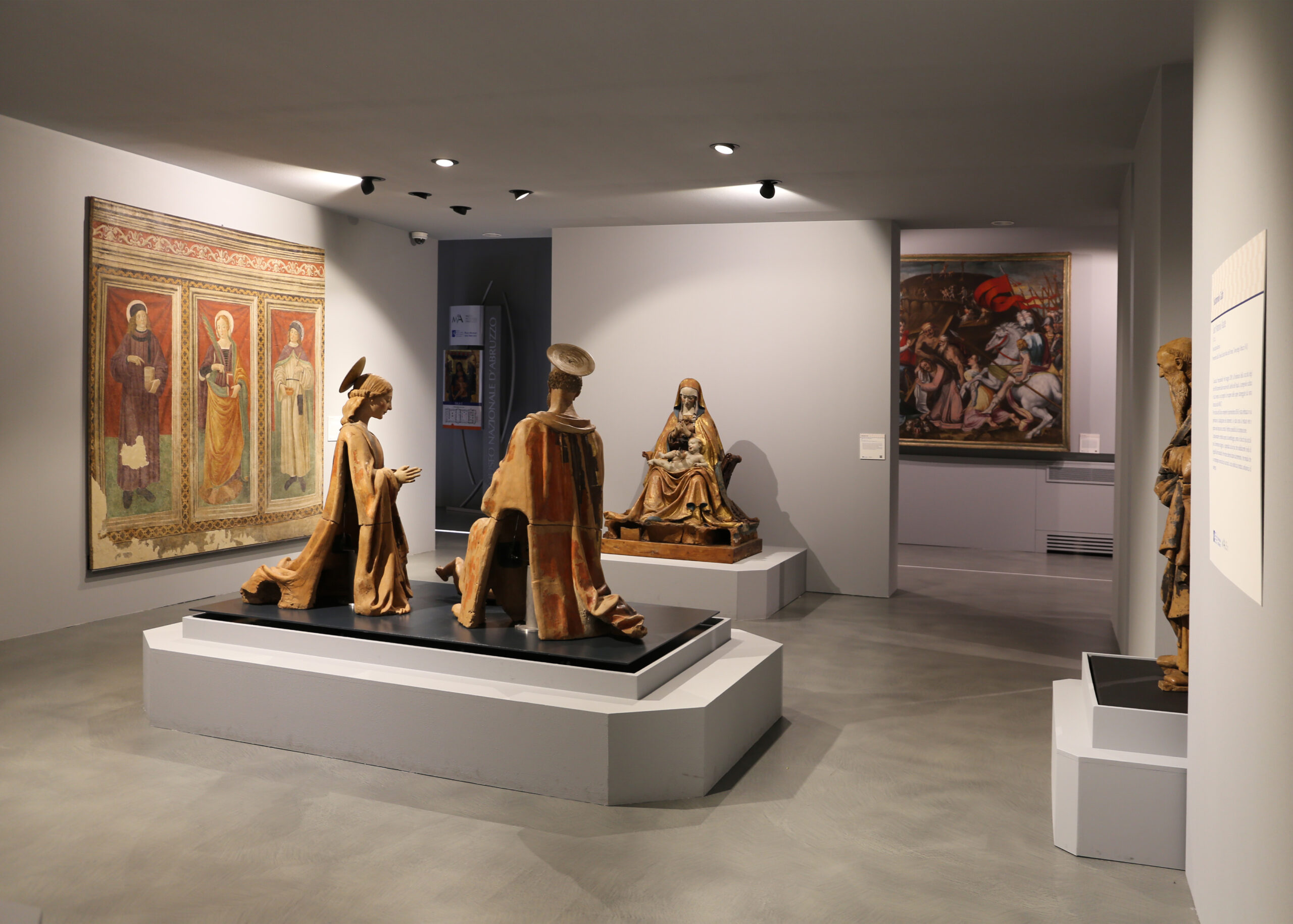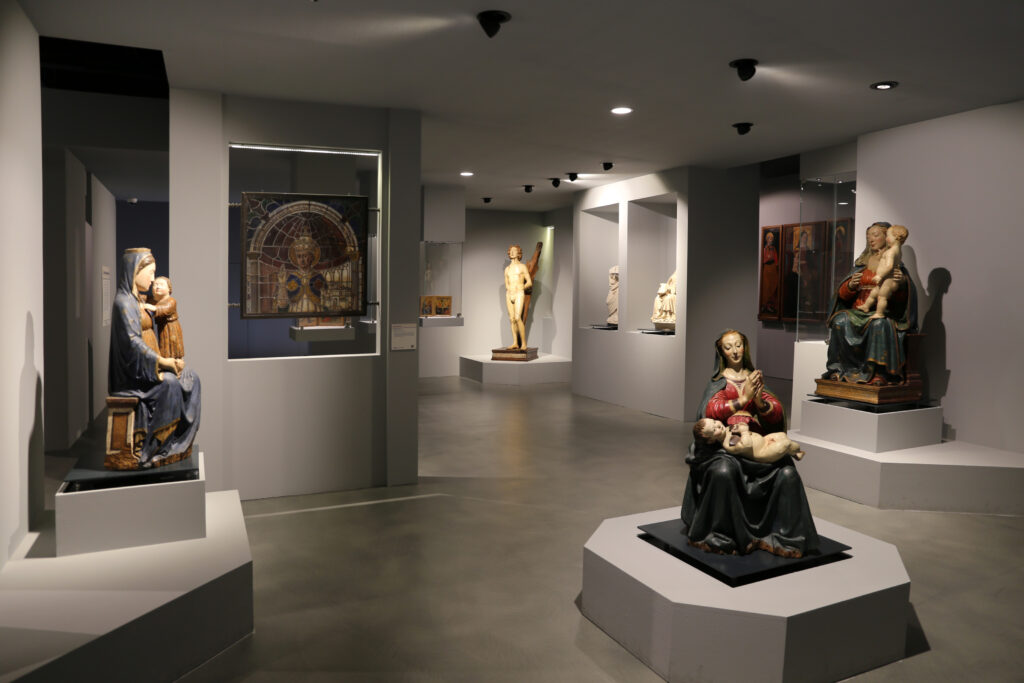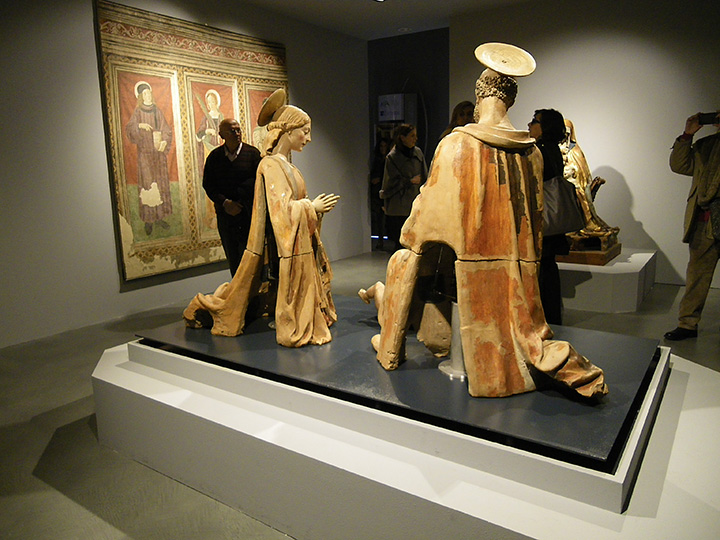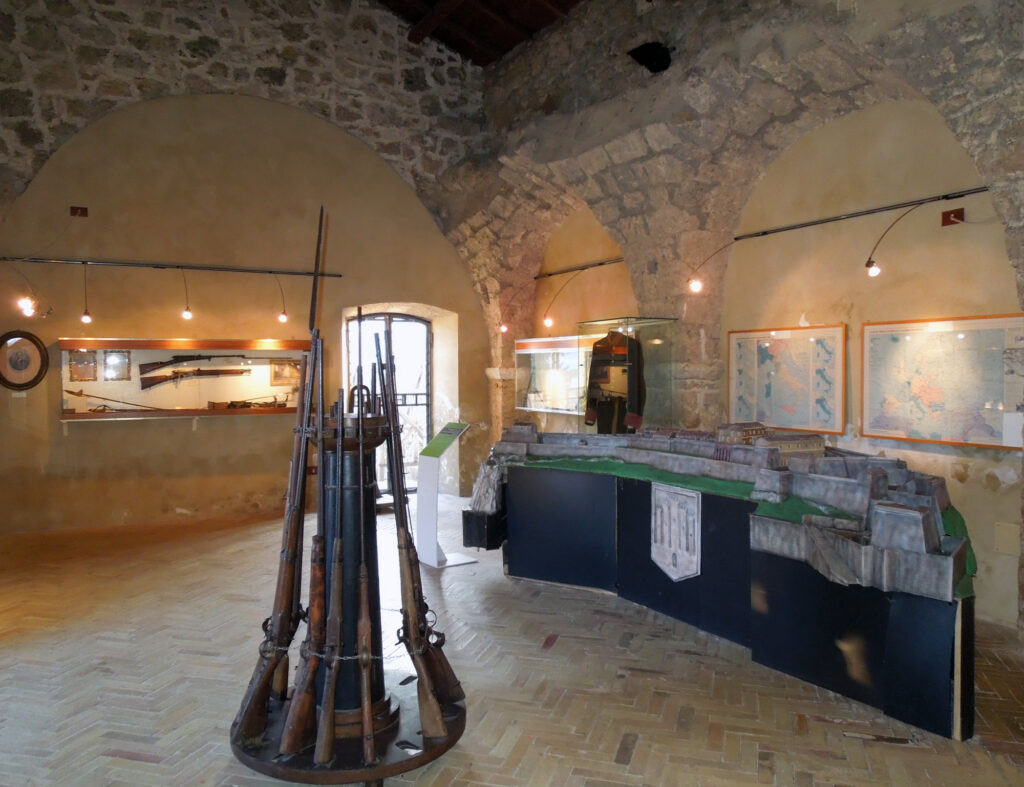The Museum that Lived Twice The catastrophic earthquake of April 6, 2009 brought about the closure of the National Museum of Abruzzo, which had been until then the main one in the region, due to its historical and architectural importance – the Spanish fortress of L’Aquila.
One of the most grandiose and best preserved examples of sixteenth-century military architecture – for the size of the exhibition area and number of visitors, for the consistency and value of the heritage exhibited, which documented the history and prehistory of the regional territory, from the beginning of the Quaternary era to the whole Twentieth century.
Among the paintings of Franciscan subjects and commissions (room D) stands out the polyptych depicting San Giovanni da Capestrano and stories from his life, the work of an unknown master with a complex culture, who is also credited with the painting depicting Saint Francis receiving the stigmata. In the sixteenth century (room E) the highly original personality of Saturnino Gatti emerges, recently recognized as a leading figure of the Italian Renaissance. The Museum exhibits two paintings on wood by this artist (Madonna degli Angeli, 1505; Madonna del Rosario, 1511) and several terracotta sculptures (Crib of Tione and Sant’Antonio Abate, 1512), saved from the earthquake and admirably restored. The review concludes with the canvases by important Neapolitan seventeenth-century masters (room F): Mattia Preti, Bernardo Cavallino, Jusepe de Ribera, Andrea Vaccaro, Massimo Stanzione.




